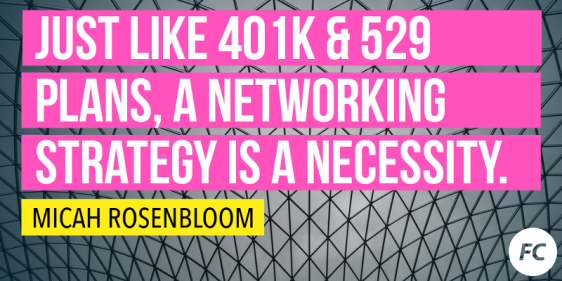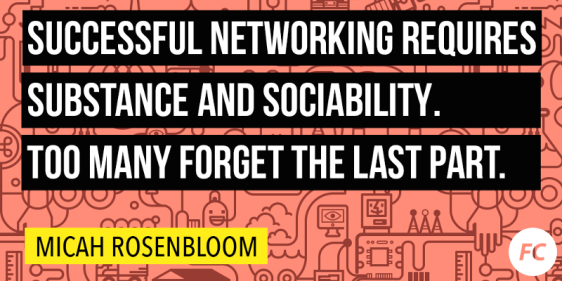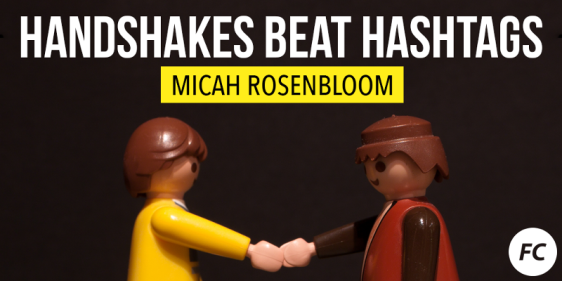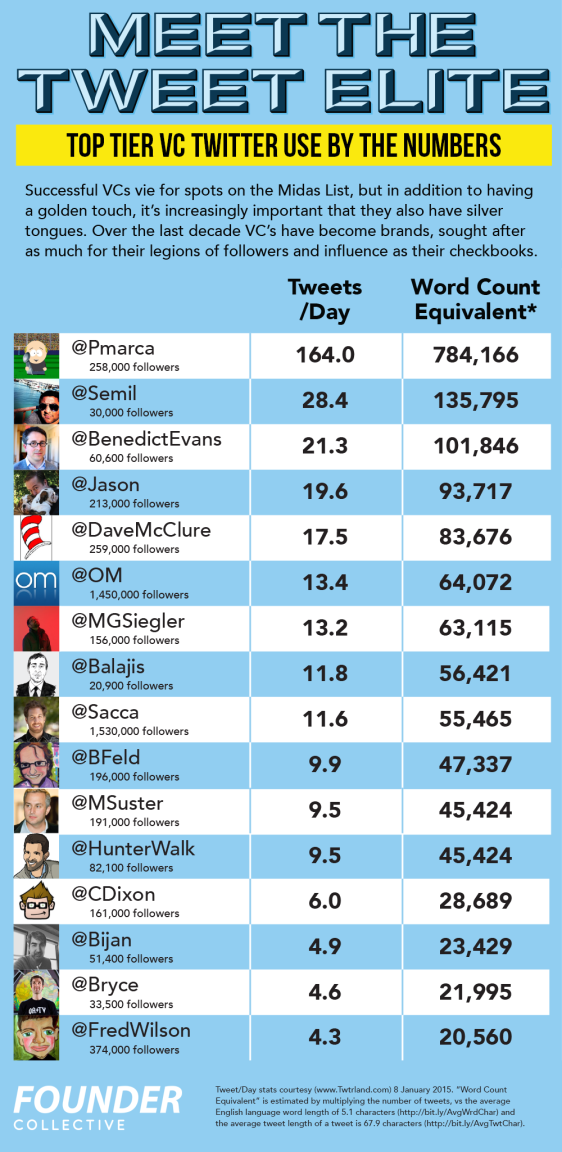I never believed the refrain “who you know is as important as what you know, ” but, from Hollywood to Wall St to Silicon Valley, it’s hard to say there isn’t truth to it. For all of our connectivity, business is still built on interpersonal relationships.
When I first got to venture capital, I assumed we were all assessed by our IRRs. Surprisingly, a critical framework by which investors assess my industry is by a concept called “network centrality.”
Shockingly, this is what we called “hanging with the cool kids” when I was in high school (or grade school for that matter). In this context, the term is defined as a measure of how much you are an “influencer” and how well connected you are to other influencers. The theory goes that the more connected the VC, the more (and perhaps better) dealflow she/he sees. I’ve seen LPs literally build maps of VCs and their connectedness to others and the tech ecosystem at large. For example, see Endeavor Organization’s NYC Tech Map.

Just like putting off contributions to your 401K, neglecting your network is a career-ending mistake.
Your network is perhaps your most valuable professional asset. So, just like you manage your 401K and 529 plans, building a networking strategy is a good idea. Today, there are more tools than ever to make it happen.
Hashtag Networking
Mark Suster recently wrote an excellent post about how to build business relationships online, from blogging to tweeting, and engaging with new people (without being a stalker!). He credits many of his closest professional relationships to this type of online introduction.

Successful networking, whether online or off, requires that you demonstrate substance — domain expertise, credibility, etc. and sociability — that you’re enjoyable to be with. Too many forget the last part.
Online, you can start a conversation with almost any person, in any industry, anywhere in the world. You can chime in on topics (via twitter or comments on a blog post) and listen to experts on others you know nothing about. Unlike in the real world, where you can find yourself in a conversation that’s over your head, online interactions are all upside. The anxiety of saying the wrong thing is lessened online, where at worst, you don’t get any responses (fortunately Zuckerberg has yet to add the “dislike” button).
Building your online persona and engaging with others is “marketing” or an “air game”. Historically, we thought of marketing as public relations or advertising. Only businesses and professional athletes could afford to market themselves. Nowadays, the individual (VC, entrepreneur or other professional) has to have a solid air game. Building your online presence greases the skids for networking in the real world, just as PR and TV ads help sell products.
Handshake Networking

Press flesh, break bread, or any two words describing human interaction, not facilitated by a screen or keyboard will work. Photo Credit: Julia Taylor.
While connecting with others with tweets and comments is quite valuable, I believe handshakes beat hastags. Basically, if you’re going to invest in building relationships online, you should have a similar “sales” or a “ground game” to go with it. It’s easier than ever to demonstrate substance and sociability, but the landscape is noisy. Marc Andreessen tweets over 160 times a day. Rising above this noise is critical and that’s why its best to combine both the the air and ground games.

For more background on this infographic, read this post at CB Insights.
We all know those uniquely talented people who can strike up a conversation with just about anyone at a party (some of my college friends, you know who you are). If you were like me, it isn’t as comfortable connecting with total strangers.
One of the most difficult aspects of meeting people is breaking the ice. By building your profiles, writing blogs, posting on FB and tweeting, others can know about you before you actually meet live. One of the best professional ice breakers these days is “I like what you wrote about in your blog.” It’s always wise to read someone’s online profile before meeting them, even if its just a potential chance encounter. Flattery will get you everywhere, and there’s no question that entrepreneurs that show evidence of having read my stuff score points.
As a VC, I think about my sales strategy as often as my marketing approach. We’re humans — emotional and psychological beings. The expression “to break bread” is as old as the bible but the meaning hasn’t changed. Today, we might more often say “grab coffee” but the meaning is the same which is to bond over food and drink and get to know one another on a human level. There are certain elements of a person that just can’t be understood solely from online interactions (even online video). For this reason, I always prefer to meet entrepreneurs live, my second choice is Skype/Hangouts and (the very) last resort is the phone.
A few quick tips for networking in today’s world (whether online or off):
- Take a point of view. Develop your narrative. Politicians have their talking points. So should you. One of my old mentors said “I pay you for your opinions.” Sometimes being contrarian on a topic can help gain notice online. I’ve encouraged younger folks looking to interview for startup or VC jobs to have points of view on particular companies or industries. If you think Bitcoin is a fad, say it. Be sure to back it up too.
- Ask good questions. Make sure you have some questions chambered, e.g. What’s the biggest challenge you’re facing, why did you attend the show, etc. Be engaged, listen, and don’t just try to sell your book. One of the key benefits of face to face meetings is that people let down their guard.
- Create lists of people you want to meet. I’ve created target lists of people I want to meet, and lists of people that I haven’t connected with in some time. Just like sales, you need quarterly targets. Find ways to get introduced to people you don’t know — don’t be afraid to ask someone to introduce you or even try an InMail on LinkedIn.
- Play to your strengths. If you’re more comfortable with the written word, invest in blogging and building your online presence. If you find real world schmoozing more to your taste, invest there. Either way, remember that both activities support one another in showing substance and sociability.
- Break Bread. I host a variety of events — including founder breakfasts to foster meeting new entrepreneurs in a less pressure-filled setting. These founder breakfasts are hosted by myself and a few friends. Each of us invite people the others don’t know and it makes for great connecting and often fantastic conversations.